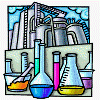Chemical and Biomolecular Engineering Research and Publications
Date of this Version
March 2005
Abstract
Human hookworm infection is a major cause of anemia and malnutrition in the developing world. In an effort to control hookworm infection, the Human Hookworm Vaccine Initiative has identified candidate vaccine antigens from the infective larval stage (L3) of the parasite, including a family of pathogenesis related- 1 (PR-1) proteins known as the ancylostoma-secreted proteins (ASPs). The functions of the ASPs are unknown. In addition, it is unclear why some ASPs have one while others have multiple PR-1 domains. There are no known structures of a multi-domain ASP and in an effort to remedy this situation, recombinant Na-ASP-1 has been expressed, purified and crystallized. Na-ASP-1 is a 406-amino-acid multi-domain ASP from the prevalent human hookworm parasite Necator americanus. Useful X-ray data to 2.2 A ° have been collected from a crystal that belongs to the monoclinic space group P21 with unit-cell parameters a = 67.7, b = 74.27, c = 84.60 A ° , β = 112.12o. An initial molecular replacement solution has been obtained with one monomer in the asymmetric unit.


Comments
This paper was published in theJournal of "Structural Biology and Crystallization Communications" Acta Cryst. (2005). F61, 391–394© 2005 International Union of Crystallography.